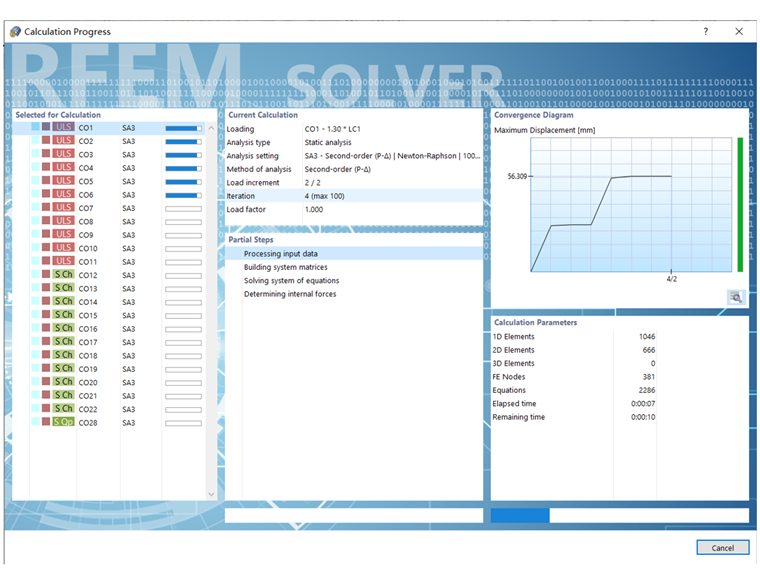There are two different ways to use several cores:
Internal Parallelization
Parts of the program process are performed simultaneously in several threads. We recommend using only physical cores, no logical (virtual) cores. Experience with scientific and technical calculations has shown that parallelization has an advantage of a maximum of about three and a half times the acceleration – regardless of the number of cores. Some processes, such as the iterative equation solver, are not suitable for such parallelization.
External Parallelization
The individual calculations are performed in individual threads. For example, you can run four solvers in four threads to calculate four different load combinations.
- RSTAB 9 External parallelization is used.
- RFEM 6: Internal parallelization is used in some parts of the program – local stiffness matrix mounting, direct solver ...
The program part called "FemBase" is massively parallelized: It calculates the result combinations and returns all results to the graphics, tables, and respective sections. It can read out the result of three load cases in three threads and calculate the result combination in the fourth thread, for example.
External parallelization is carried out by the Solver Manager, which was specially developed for RFEM 6.
The calculations for the steel design, timber design, aluminum design, and concrete design should also be performed in parallel.
All load cases that are calculated linearly (physical linearity) have the same stiffness matrix.
Nonlinearly calculated load cases and load combinations usually have different stiffness matrices, which are compiled separately. (But even in these cases, we try to group the cases with the same stiffness matrix, which is only composed once for a particular group.)
